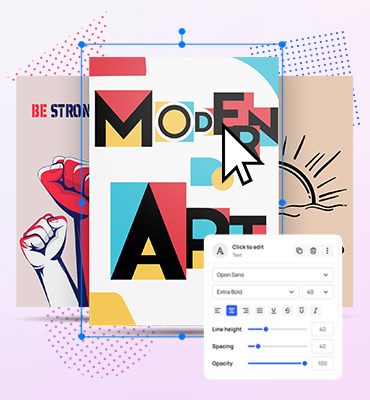How to Create Engaging Content? Here is an 8 Points Checklist

Knowing how to create engaging content is more than a marketing skill. It’s a survival tactic. Every brand, from global corporations to solo entrepreneurs, is competing for attention, and your audience’s attention span is shorter than ever.
Engaging content isn’t just about filling up space with words or videos. It’s about sparking curiosity, building trust, and inspiring action. In this guide, we’ll walk you through an 8-steps content creation checklist designed to help you connect with your audience, boost visibility, and achieve measurable results.
Why you should know how to create engaging content?
In the words of Neil Patel and his team: “content marketing is a proven strategy for generating leads, increasing sales and building engagement with your customers”. Content creation is an important aspect of marketing plans and strategies whether you are a big company, a small business or a freelancer.
Creating and publishing content is an art. It’s more than just having an idea, writing 600 to 800 words or recording a simple video and publishing it. Developing content is a process, which is why we created this 8 point content creation checklist to help you out.
If content marketing isn’t already a part of your marketing plan, then it sure is time to include it – starting by looking at our content creation checklist. And if content marketing is already a part of your marketing strategy, we hope our checklist helps you to enhance it!
1. Have you defined your content strategy?
Content creation can work wonders for your business, but it won’t do much if you haven’t defined your content marketing strategy and aligned it with your marketing strategy. It’s important to ask: what do you want to achieve with your content? Is it brand awareness, generating new leads, increasing engagement or something else? You can start by picking just one goal you’d like to achieve with content marketing first, and let that guide how you create your content.
2. What does your target audience want to know?
Dan S. Kennedy said in his book, The Ultimate Marketing Plan, that “you don’t have a business until you understand your customers. Valuable content creation requires that you know your customers’ needs.”
With that, ask yourself, who’s your target audience? Where can you find them? What kind of content would appeal to them? Are they looking for the topics that you are an expert in? Here are some ways to find out and validate what your audience wants to know about:
- Send out a survey via survey software to find out more about them
- See what content your competitors are creating and publishing
- Check out forums, groups and question sites, for example, LinkedIn groups and Quora
- Keep tabs by setting up alerts on Google Trends
- Run a search on Answer the Public
3. What type of content would attract your customers the most?
There are many different types of content you can create – from a long-form article and a shorter to-the-point blog post to infographics, videos and even memes. With blog posts and articles, you can also create accompanying content like infographics and videos and subsequently, repurpose it.
Which content format would engage and interest your audience the most? What would attract them and capture their attention? You would also want to consider your brand story along with the tone of voice you want to use in the article.

4. Content creation starts from an idea and research
Content creation starts with an idea, be it from content audits, conversations and meetings with customers or even an idea you had in the shower! It then comes down to making your topic idea sync with your content strategy and making your idea come alive, which is where research comes in.
You may want to conduct some original research for an insightful article, gather secondary research and amp it up with quotes from thought leaders of that topic or even create content based on your customers’ frequently asked questions. When doing research, consider using personal search engines for a deeper and more secure browsing experience.
Whichever type of content you create, it should always be valuable to your audience in these five ways:
- Findable
- Readable
- Understandable
- Actionable
- Shareable
5. Make sure to grab attention with your content
Be it an article/blog post, video or infographic, the first few seconds matter! This means that your headline or opening needs to grab your audience’s attention. Why not begin your content with a teaser, a meaningful story, a surprising statistic or something funny along with an eye-catching visual? The sky is the limit when it comes to creativity on how to leverage your customers’ attention.
6. Your content should have a structure
With creative freedom, comes content responsibility! Okay, we made up this lineup ourselves. What we mean is that your content, as creative as it would be, should have a basic structure such as headlines, bolded words and italics for articles and blog posts and titles and sections for videos. This allows your audience to follow easily and remember your piece of content that you’ve worked so hard on!

7. When should you post your content?
This is often a question that marketers have in their heads – when should you post your content? Especially when it comes to posting on social media, timing can matter. With the deluge of information out there today, you certainly don’t want your content to be lost in the crowd.
Que analytics to the rescue! Google Analytics allows you to see when your customers interact with your website, while social media analytics can help you see when your audience interacts with you socially. There is no one set time that is ideal for posting, as this is subjective to your own customers, so you may want to use analytics to your advantage here.
8. Optimize, promote and distribute your content
The work isn’t over once you’ve created and published your content! Now’s the time to optimize, promote and distribute your masterpiece by shouting out loud about it.
Take a look at your marketing plan and find keywords and phrases that matter to you. Then optimize your content for that so it helps towards search engine optimization (SEO). Whether you edit your article/blog post or the description for your video, this will help towards making your content findable.
Share your content on social media, forums, groups, or send out an email campaign directly to your customers. It’s up to you to make sure you get where your audience is.
So, how to create engaging content? Summary of the 8 points
1 – Define Your Content Strategy – Set clear goals for your content and align them with your overall marketing strategy.
2 – Understand Your Target Audience – Identify who you’re speaking to and tailor your topics to their needs.
3 – Choose the Right Content Format – Select formats (articles, videos, infographics, etc.) that resonate most with your audience.
4 – Start with a Strong Idea and Research – Build your content on solid ideas backed by credible data and insights.
5 – Grab Attention from the Start – Use powerful headlines, openings, and visuals to hook readers immediately.
6 – Structure Your Content for Easy Reading – Organize content with headings, bullet points, and formatting for clarity.
7 – Post at the Right Time – Use analytics to determine the most effective times to publish.
8 – Optimize, Promote, and Distribute – Apply SEO best practices and share your content across multiple channels.
And that’s all folks, for now. It’s time to let your content do its magic!
Mastering how to create engaging content takes planning, creativity, and consistency. By following this 8-step checklist, you’ll be better equipped to capture attention, build relationships, and achieve your marketing goals. Ready to bring your ideas to life? Use MediaModifier to create stunning visuals that make your content impossible to ignore.
Frequently Asked Questions
What makes content engaging?
Engaging content captures attention, provides value, and encourages interaction through storytelling, visuals, and clear calls to action.
How do I know what content my audience wants?
Analyze your audience’s behavior through surveys, social media insights, and keyword research tools like Google Trends or AnswerThePublic.
Does SEO matter for engaging content?
Yes. SEO helps your content reach the right people by improving its visibility in search engines.
How often should I create new content?
Consistency is key. Many brands find success posting weekly or bi-weekly, but the ideal frequency depends on your resources and audience engagement.
Related articles
Visualize your design Use a product mockup to showcase your design


Create your design Use our templates to create delightful designs for any medium


